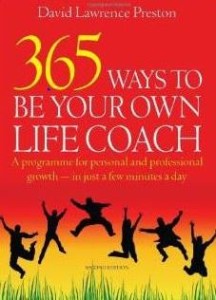In a previous blog, I observed that the discovery long ago that we could heal ourselves was a great step forward in human evolution, and the healing methods used at each stage of our advancement are a direct result of the consciousness which prevailed at the time. Healing consciousness is about how we experience healing; our awareness of the healing process and what healing could be. It also says a great deal about our view of what a human being actually is and what it means to be human.
I have identified seven levels of consciousness in healing – the mechanic, the naturalist and the microbe carrier are the first three; in this blog I discuss the next two, the biochemist and the mind-body healer.
Level Four: the biochemist
Biochemical consciousness is the prevailing medical mindset in the West today. In the media, finding a ‘cure’ for any condition is synonymous with inventing a new drug or, more recently, manipulating the genetic makeup of the body in some way. Biochemical consciousness assumes that human beings are basically cocktails of chemicals and we function by means of chemical reactions. Some neuro- scientists think that even our thoughts are just manifestations of chemical reactions.
Healing is therefore reduced to adjusting our biochemistry like a cook adds a little more salt or spice to improve the food. Manipulating genes falls into the same category.
Biochemical consciousness encompasses not only drugs, but also anything ingested with the aim of altering the biochemistry of the body. Thus biochemical and natural consciousness overlap, since natural remedies such as herbs and dietary supplements have the same function. Once, drugs were simply extractions of the active ingredient of a natural substance; nowadays they are more likely to be artificial chemical compounds synthesised in a test tube, then tested to see if they have the desired result.
This is hit and miss medicine par excellence – it takes no account of individual differences, its effects are indiscriminate, and the side effects are often worse than the disease it’s supposed to cure. Moreover, it is prohibitively expensive; most of the world’s population simply cannot afford it. And it is manipulated by commercial concerns often at the expense of other, more suitable modalities.
Drugs do have a place, of course. Many people enjoy a better quality of life than would be possible without them. But how often are hard-pressed doctors too quick to reach for the prescription pad when there are better, less harmful alternatives? How often are drugs merely suppressing symptoms while masking the real cause?
Those at the biochemists’ level of consciousness are still on the lower slopes of the mountain. They will never understand the higher levels unless and until a shift in their awareness takes place – but a shift towards the next level is already taking place among some health professionals. Top doctors are realising that many of the ills that plague the so-called advanced societies are stress related – and we know that stress is mainly a result of our beliefs and ways of thinking (there’s nothing new in this – the Greek philosopher Epictetus said as much 2,500 years ago). Hence Level Five.
Level Five: the mind-body healer
We’ve always known that there’s a close connection between body and mind. No-one doubts that anxious thoughts can give rise to headaches, muscle tension, impaired performance, an upset stomach and so on.
The evidence for mind-body consciousness is strong indeed. Firstly, there’s the placebo effect – the disturbing (to allopaths) fact that in some circumstances a pill or potion with no active ingredient is as effective as the best the pharmaceutical industry can offer. The medical mainstream dismiss placebos as illusory, even unethical, whereas in reality they tell us more about the ability of humans to heal than any amount of double-blind trials.
The second is the power of suggestion. Placebos are actually a form of suggestion. So are doctors’ waiting rooms, white coats, stethoscopes and prescription pads. But suggestion is most closely associated with hypnotists placing healing ideas and images in the subconscious mind of the patient. I can personally vouch for its effectiveness when used by a trained practitioner such as myself with the right person in the right circumstances. The great Milton Erickson, the inspiration behind Neuro-Linguistic Programming (NLP) took this to a whole new level, and while we may congratulate ourselves that this knowledge is a recent discovery, it’s actually as old as our ability to smelt iron and build pyramids.
So why did the Western medical establishment ignore the mind-body connection for so long? Because of their blind reliance on the kind of science that confines itself to those things that can be observed and measured through the five physical senses (a case of limited consciousness if ever there was one). In a nutshell, you can’t see thoughts and you can’t measure their progress through the body. Hence there was no proof that the supposed causes and effects between thoughts and physical aspects were linked.
Then about thirty years ago, mainstream scientists such as Dr Candace Pert and the founders of Psycho-Neuro-Immunology (PNI) – Hans Selye, Robert Adye, Nicholas Cohen, David Felten and others – began to discover the bodily processes by which thoughts and emotions manifested as physical changes in the body. In Germany, Dr Ryke Hamer showed how an emotional shock can affect the physical make up of the brain and result in illness (he was banned from practising in his native Germany and thrown into to jail for some of his ideas, but not this one). Now, I believe, most doctors understand that many illnesses have a psycho-somatic component and some even believe that all illnesses are psycho-somatic in origin.
Patients who don’t realise their emotions affect the physical body will often fail to seek the right help, e.g. I once met a young man who suffered from serious eczema. He relied on creams to alleviate the condition (which was only partially successful), whereas anyone with half an ounce of awareness could see that the problem was emotionally driven.
Of course, mind-body healers work on the basis that we are shaped mainly by our thoughts and beliefs. Again, this is not a new idea: King Solomon said as much in the Hebrew Scriptures, as did the Buddha, Lao Tsu, Yeshua the Carpenter from Nazareth, Plato, Hippocrates, numerous Roman scholars, and the great psychologist himself, William Shakespeare.
Some go further than this and say we are our thoughts, but this is far from the whole truth. If we are our thoughts, which thoughts are we talking about? The ones I’m having now? Or this morning? Or yesterday? Or long ago?
We are not our thoughts. We are not our beliefs. We are not our emotions. Something inside is not only aware of our thoughts, but is aware that we are thinking and can observe the activity of thinking; is aware that we are experiencing an emotion and can observe its effects. There is even an observer who observes ourselves observing our thinking! Experience this, and we are perhaps then we are approaching pure consciousness.
Awareness, intention, attention, imagination and belief are the keys to mind-body healing. Taken in combination, they increase the effectiveness of all forms of healing. For instance, F.W. Alexander – best known for teaching his patients to stand, sit, walk, hold their heads correctly and so on – taught his patients and students mindfulness and affirmations to accompany each healing movement.
I sum this up in my I-T-I-A Formula – intention, thinking, imagination and action. When all of these are applied to any given situation, the results can be astounding.
Mind-body consciousness is much more than just healing the body, though. The Great Teachers always said that we manifest our experience of reality through our thoughts, perceptions, beliefs, emotions and so on – and today’s leading scientists (e.g. quantum physicists) agree. When we observe the world, all we see are billions of particles and waves moving and spinning haphazardly – what Deepak Chopra calls the ‘quantum soup.’ It is the attention and meaning we give them that brings them into form. Our minds – our consciousness – actually create the world we live in. And perhaps they create our bodies too.
© David Lawrence Preston, 7.5.2016

Follow me on Facebook and Twitter @Feelinggoodatt



